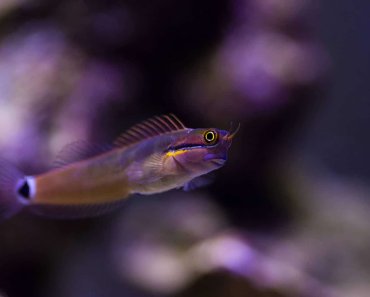A growing number of countries have banned declawing, but there’s still a distance to go before this painful procedure is completely eliminated. Learn why declawing is so debilitating for cats, and consider some humane alternatives.
Most informed cat lovers know that declawing is one of the worst things we can do to our feline friends. The procedure is both painful and inhumane, and can cause long-term health and behavioral problems in cats. Unfortunately, although declawing has been banned in many countries and municipalities, it’s still being done in others. This articles discusses why declawing is so harmful to cats, why some vets are still doing it, and what the alternatives are.
The declawing procedure and its consequences
The procedure known as declawing (onychectomy) involves the amputation of each digit at the level of the first knuckle, including the nail bed. This amputation involves disarticulation between the second and third phalanges. The extensor tendon is severed and the remaining bone in the digit is eventually pulled downward by the intact flexor tendon so that the cartilage bone end is now forced to bear weight.
As a result, many cats develop hard, painful callouses called corns, due to constant pressure on the remaining digital pad. Besides varying amounts of lingering pain, tingling, and numbness, called “phantom pain” (which also occurs in human amputees), the cat also endures physiologic and conformational stresses.
There is no such thing as a humane surgical technique when it comes to declawing. Scalpel, guillotine, and surgical laser all have the same end result by causing conformational abnormalities. Further complications can include irreversible nerve damage, burning (from surgical laser), and bone shards left within the tissue. Tendonectomies (tenectomy of the deep digital flexor tendon) have been performed as an alternative to declawing, but a study published in JAVMA in 1998 found that incidence of bleeding, lameness, and infection, was similar to that caused by declawing.
Cats are meant to walk on their toes. Declawing shifts a cat’s body weight back onto the metacarpal pad, which causes stress on the tendons and results in eventual elbow arthritis. Additionally, hyper-flexion of the stifles (knees) stresses the back muscles, resulting in back arthritis as the cat ages. Not one declawed cat escapes this fate if he lives into old age.
 The acute and chronic complications of declawing are many and varied:
The acute and chronic complications of declawing are many and varied:
- Pain
- Hemorrhage
- Lacerated paw pads
- Swelling
- Reluctance to bear weight
- Neuropraxia (transient motor paralysis)
- Radial nerve damage
- Lameness
- Infection
- Abscess
- Tissue necrosis
- Wound dehiscence
- Incomplete healing
- Protrusion/necrosis of the second phalanx through the pad
- Claw regrowth, known to occur 15+ years post-surgery
- Chronic draining tracts
- Self-mutilation
- Lethargy
- Carpal hyper-extension (palmigrade stance, dropped carpus, walking on wrists)
- Flexor tendon contracture
- Aggression
- Idiopathic (stress-induced) cystitis
- House soiling
- Laser burns
- Increased vocalization
 Dr. Nicole Martell-Morin’s peer reviewed study in the Journal of Feline Medicine and Surgery revealed significant increases in back pain, biting, and barbering in declawed cats as opposed to controls. Elimination behaviors and aggression were also more common. In 2001, G. J. Patronek reported in JAVMA that 80% of declawed cats have at least one medical complication post-operatively, and more than a third developed post-surgical behavior problems, including biting and house soiling.
Dr. Nicole Martell-Morin’s peer reviewed study in the Journal of Feline Medicine and Surgery revealed significant increases in back pain, biting, and barbering in declawed cats as opposed to controls. Elimination behaviors and aggression were also more common. In 2001, G. J. Patronek reported in JAVMA that 80% of declawed cats have at least one medical complication post-operatively, and more than a third developed post-surgical behavior problems, including biting and house soiling.
5 myths that support declawing vs. current information
At one time, veterinarians thought the benefits of declawing outweighed the risks, but we now know this isn’t true. In fact, there are no benefits to declaw surgery. Current studies are demonstrating what empathetic critical thinkers have long been suggesting – that the stress and complications arising from declawing are more serious and prevalent than originally thought. Despite this, several myths persist about the supposed benefits of declawing.
Myth #1: “Declawing help protect immune-compromised people.”
Cats are much more prone to biting when their paws no longer deliver the warnings that used to protect them from unwanted advances. Biting is much more of a threat to those who are immune-suppressed. The CDC does not advocate declawing cats for this reason. Instead, they suggest avoiding situations where scratching may occur. The National Institutes of Health advise avoiding rough play, while FamilyDr.org warns people not to provoke cats into scratching them.
Myth #2: “Declawing protects children.”
The solution to cat scratches is to teach kids to avoid an interaction that would result in injury. Children should be taught to understand and respect body language, a skill that would benefit their future relationships with all species as well as interpersonal relationships at school. Providing a cat with appropriate outlets for natural feline behavior in the home, as well as offering him a respite from youthful enthusiasm, will also go a long way towards feline/human harmony in the household.
Myth #3: “The cat will lose his home.”
On the contrary, several municipalities that have banned declawing (e.g. LA County Animal Services) found that more cats were surrendered without claws than with. The reasons for surrender were often the very complications caused by the surgery, such as litter box avoidance, and aggression.

Myth #4: “Landlords require declawing.”
This is a case of “educational deficiency.” Every landlord I have written to has relaxed this requirement when given the facts. In rare cases where a landlord may remain steadfast (a situation I have yet to encounter), I would counsel the family to search for other accommodations, or find a suitable foster home for the cat. Rental situations are temporary in most cases. Declawing is permanent!
Myth #5: “My cat is fine after being declawed.”
Some cats are more capable of adapting than others, but they all suffer problems after the procedure, even if they’re not obviously evident. The cat’s personality may influence how he adjusts to being declawed. A tendency towards extrovert behavior (a need to move the feet) as opposed to introvert behavior (a need to feel safe or motivated before moving the feet), can explain the different ways in which a cat expresses his emotional needs and pain response. A confident (play/food) extrovert cat will pursue hunting and play behaviors in spite of discomfort, since his motivation is hunt/play/food. A less confident (safety/comfort), timid and emotional introvert may display defensive behavior, withdrawal, aggression, and resentment when coping with chronic pain. Carpeted floors may also minimize the painful impact of jumping from surfaces, thus giving people the false impression that their declawed cats are fine.
Humane alternatives to declawing
- Create a cat-friendly environment in your home with vertical and horizontal scratching posts made of sisal, carpet, and cardboard substrates. Offer areas of respite from interaction with others, a cat “superhighway” that allows access to safety, and an ability to observe the surrounding area without surprise interactions.
- Establish routines of interactive play to allow your cat to express his natural tendencies to hunt, catch prey, eat (a meal or treat), groom, and sleep. Do this at least twice daily.
- Keep his nails trimmed, using a clipper designed specifically for cats, or ask your veterinarian to do it.
- Use nail caps on his claws – one company that offers them is SoftPaws.
- Sticky Paws tape helps protect furniture from scratching by modifying feline behavior.
Declawing is not only painful and inhumane, it’s also unnecessary. In the words of Maya Angelou, “When we know better, we do better.” Let’s do no more harm to our cats, and stop declawing them!




























